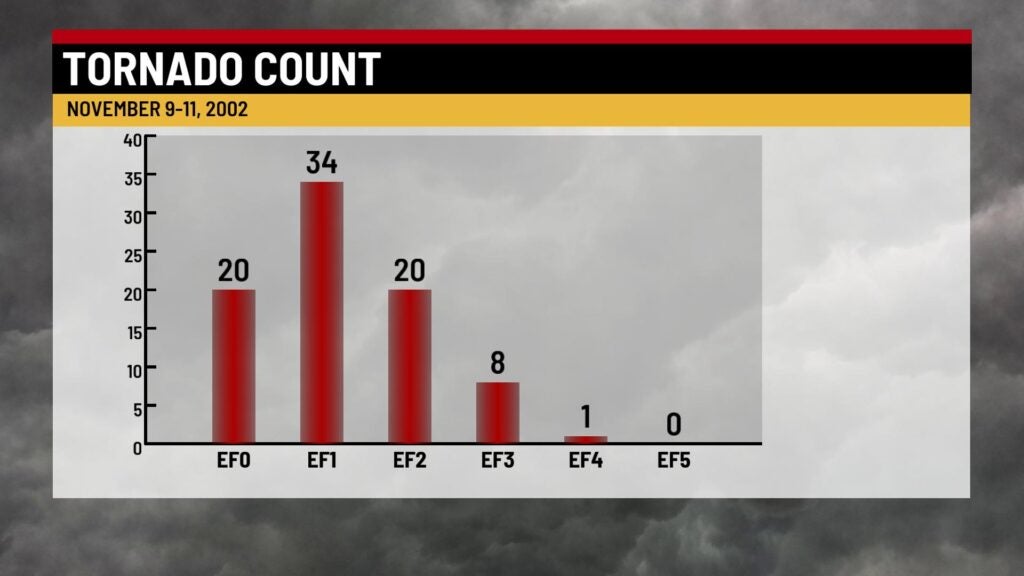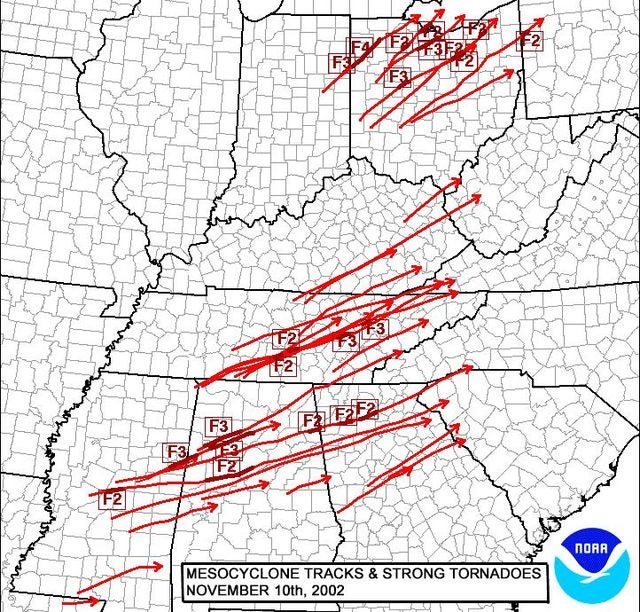Veterans Day 2002 tornado outbreak: 20 years later
INDIANAPOLIS (WISH) — The third-largest November tornado outbreak on record in the United States happened around this time 20 years ago.
The timeline of focus with this outbreak was Nov. 9-11, 2002, and Nov. 10, 2002, was the most active day. A staggering 88 tornadoes touched across 17 states. Twelve of the tornadoes killed 36 people, with 17 of those deaths in Tennessee.
One of the first notable things to note about this outbreak is its large spatial extent. That came to be due to a far northward transport of sufficient moisture as a powerful system sat in the Great Lakes region. There was also very strong winds aloft that built in by the afternoon hours with a powerful upper-level and lower-level jet stream.
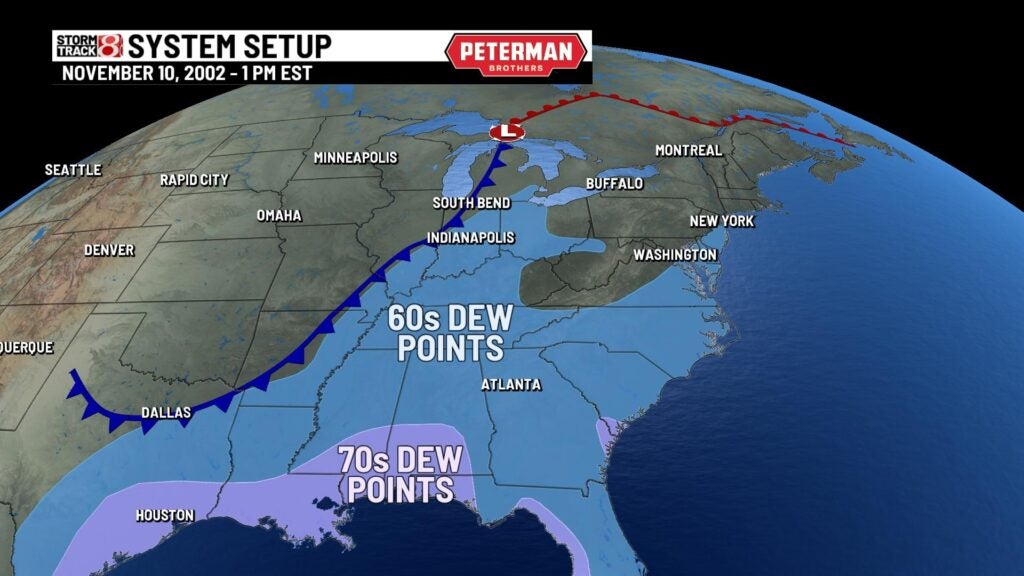
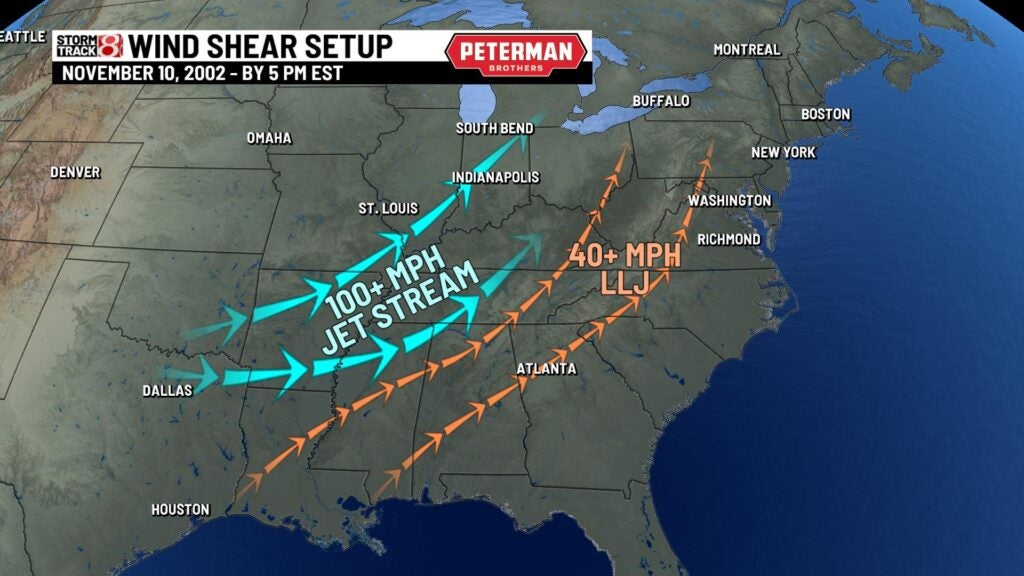
The combination of the strong winds aloft and moisture led way to a dangerous large-scale environment for supercell activity.
Everything got started on Nov. 9, 2002, when a collection of tornadoes touched across parts of Arkansas, western Tennessee, Missouri, and Kentucky. There was a deadly F2 (two deaths) near Huntingdon, Tennessee, and a deadly F1 (two deaths) south of Adams, Tennessee. The worst of this outbreak was yet to come.
Nov. 10, 2002, was an unseasonably warm day across areas east of the Mississippi River. By 2:30 p.m. EST, the first batch of tornado activity happened with a couple of weak tornadoes in Illinois and far-eastern Indiana. However, the Indiana cell quickly intensified and dropped a strong F3 near Berne, damaging several homes.
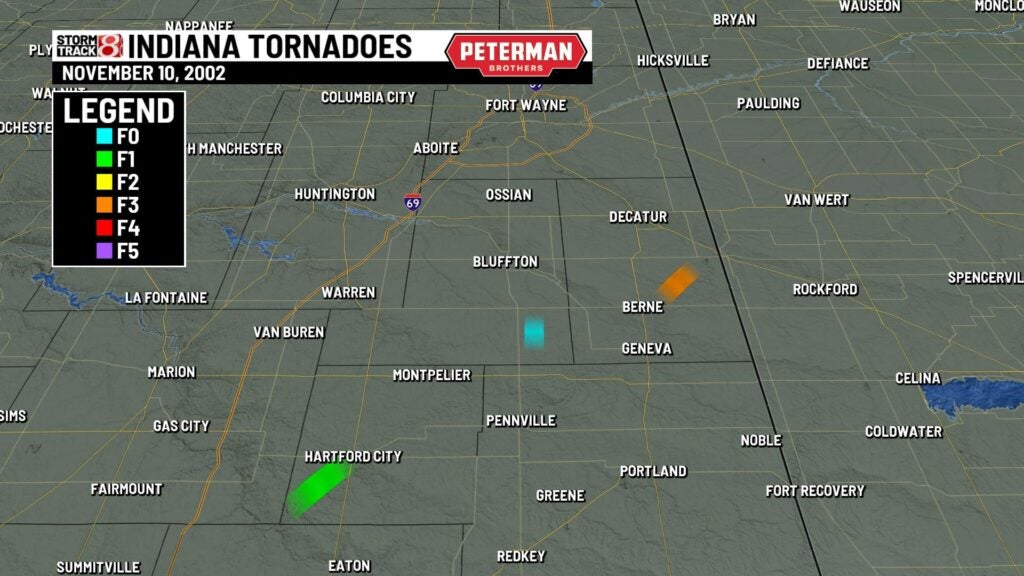
Once the cell crossed into Van Wert County, Ohio, the most violent tornado of the entire outbreak touched down at 3:13 p.m. EST. This tornado quickly roared into the northwest side of Van Wert, and it would damage or destroy over 200 homes and several businesses. A cinema in the city had to be evacuated to the back theater, but everyone who was there survived. Roselms, Ohio, was also heavily hit by this violent tornado.
The Van Wert County tornado would be rated an F4; it stayed on the ground for 52.8 miles. Four people were killed and 17 were injured.
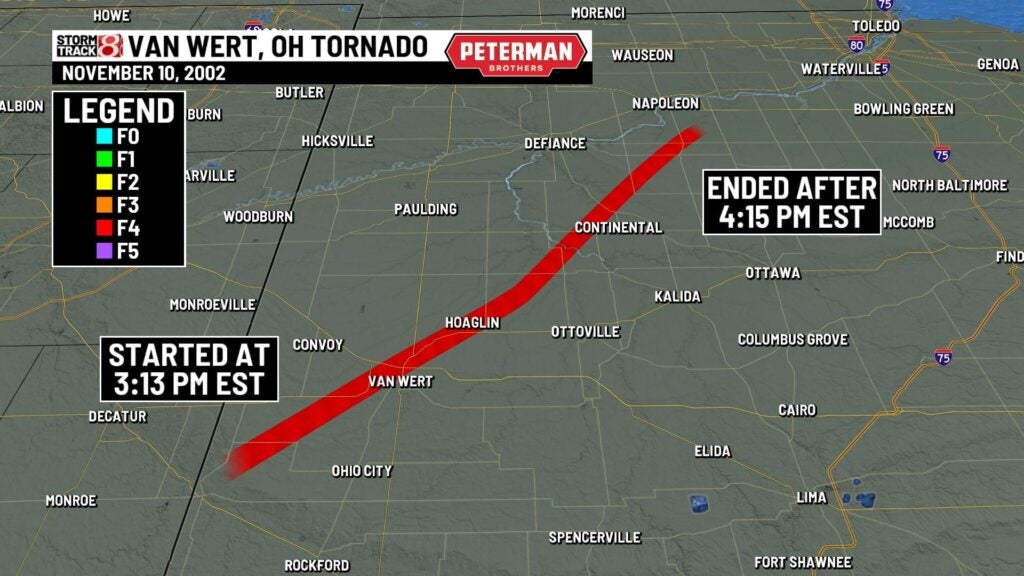
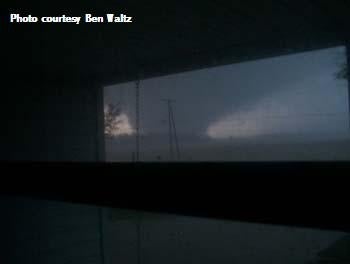
By the mid- to late afternoon hours, additional storm clusters would give way to more significant tornado activity across northern Ohio. One of the notable tornadoes that took place in northern Ohio was the Tiffin F3. This tornado tracked for 21 miles and struck the Ohio communities of Tiffin and Republic. A person was killed near Republic, Ohio, when a house was swept off of its foundation.
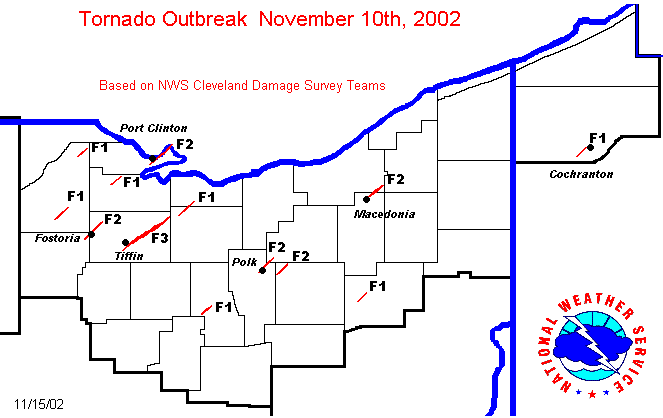
Tennessee would eventually be placed under the gun once again for troubling tornadic activity. At 8:31 p.m. EST, a powerful F3 touched down and rolled into Mossy Grove and Joyner, Tennessee. These communities would be devastated by this tornado with nearly 100 homes damaged or destroyed. Thirty mobile homes in the Tennessee communities also were damaged or destroyed. Seven people were killed. Crossville, Tennessee, also would be hit hard by a deadly F3 that killed four people.
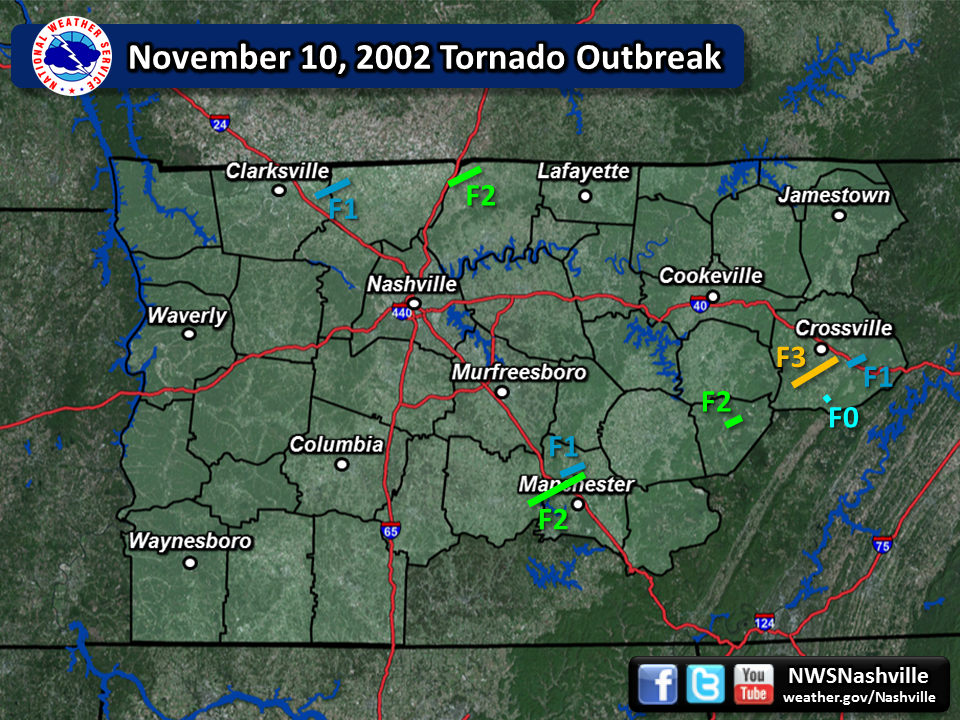
Rolling into the nighttime hours, there was still lots of moisture around in Mississippi and Alabama. This helped storms keep their intensity up well after sunset. Long-track tornadoes happened near Webster and Artesia, Mississippi, before those storms moved into Alabama and caused more issues there.
The two strongest tornadoes that would affect portions of Fayette, Walker, Winston, and Cullman counties in northern Alabama would both be rated F3. From 6:52 -7:45 p.m. CST, the first of these two F3s tracked for 44.3 miles with Carbon Hill being among the hardest-hit locations. This tornado caused four fatalities and 10 injuries. The second F3 would become the longest-tracked tornado of this outbreak as it tore a 72.6-mile path close to the first F3. Saragossa, Alabama, was among the hardest hit with seven people being killed.
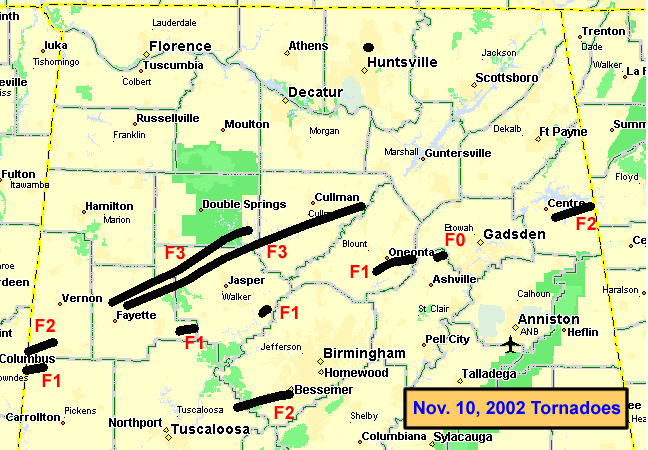
The Nov. 9-11, 2002, tornado outbreak ranks as the third-biggest November tornado outbreak in U.S. history. It only follows behind the Nov. 23-24, 2004, and Nov. 21-23, 1992. outbreaks.
